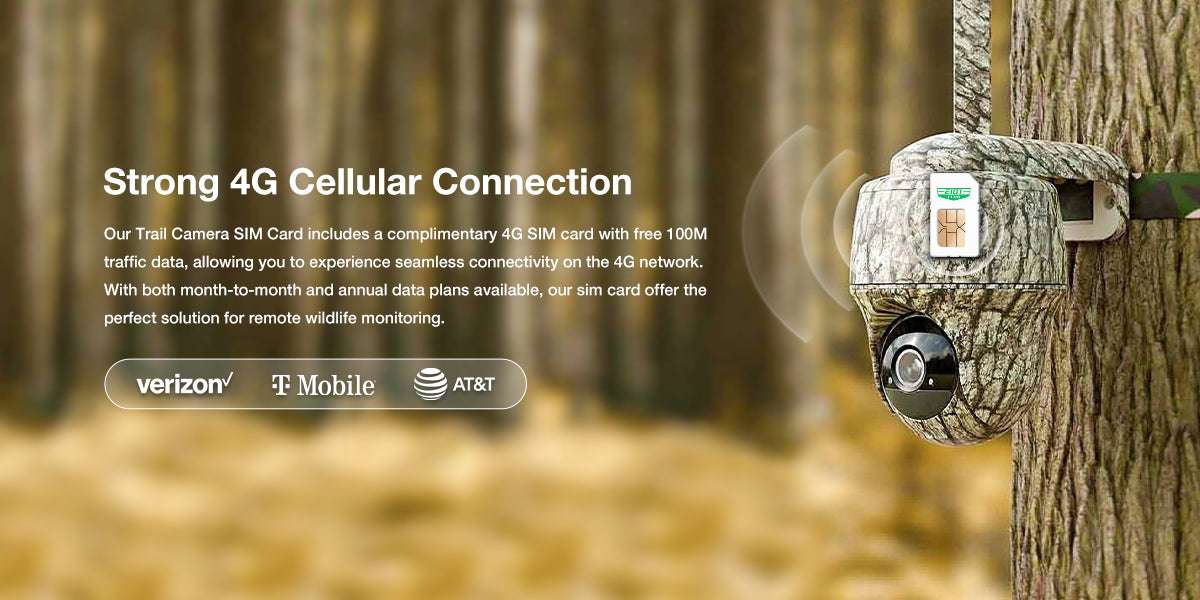Unlock the Secrets: Choosing the Perfect SIM Card for Your Game Camera Adventure!
In the world of wildlife monitoring, hunting, and security, game cameras have emerged as invaluable tools. These devices not only capture stunning images and videos of wildlife but also provide real-time insights into animal behavior and movement patterns. However, to fully harness the capabilities of a game camera, selecting the right SIM card is crucial. The type of SIM card you choose can significantly impact the camera's performance, connectivity, and overall user experience. This article will delve into the different types of SIM cards available for game cameras, their benefits, and essential considerations to keep in mind while making your selection.

Understanding Game Cameras and Their Connectivity Needs
Game cameras, also known as trail cameras, are remote devices equipped with motion sensors that capture images and videos when triggered by movement. These cameras are primarily used in outdoor settings for wildlife observation, security monitoring, and even hunting. Their functionality relies heavily on connectivity, particularly when it comes to transferring data remotely. Most modern game cameras are equipped with cellular technology, allowing them to send images and videos directly to a smartphone or computer. This real-time data transfer is essential for users who wish to monitor wildlife or security situations remotely, without the need for periodic visits to retrieve memory cards. A reliable SIM card ensures that your game camera remains connected, enabling consistent data flow and uninterrupted performance.
Types of SIM Cards for Game Cameras
When it comes to game cameras, understanding the types of SIM cards available is essential. There are three primary types: standard SIM cards, micro SIM cards, and nano SIM cards. Standard SIM cards are larger and are typically found in older devices. Micro SIM cards are slightly smaller and are commonly used in many smartphones. Nano SIM cards, the smallest of the three, are often seen in the latest smartphone models. It's important to check your game camera’s specifications to determine which SIM card size it requires. Compatibility is key; using the wrong size can render your camera inoperable. Additionally, some cameras may have specific requirements regarding the type of SIM card, such as GSM or CDMA networks, so be sure to verify these details before making a purchase.
Prepaid vs. Postpaid SIM Cards
When selecting a SIM card for your game camera, you’ll encounter two main types: prepaid and postpaid SIM cards. Prepaid SIM cards allow users to pay upfront for a specific amount of data, making them a flexible option for those who may not require constant connectivity. This arrangement is particularly beneficial for game cameras used sporadically, as it provides a cost-effective solution without ongoing commitments. On the other hand, postpaid SIM cards typically involve a monthly billing cycle and may offer unlimited data plans. While they can be convenient for regular users, they may also lead to higher costs if the camera is not used frequently. Evaluating your usage patterns and budget can help you determine which option is best suited to your needs.
Data Plans and Coverage
Choosing the right data plan is critical for the effective operation of your game camera. Various factors come into play, including data usage, network coverage, and signal strength, especially in remote areas where many game cameras are located. It's essential to estimate how much data your camera will consume based on its settings and how often it transmits images or videos. Additionally, ensure that the SIM card provider offers robust network coverage in the areas where you plan to place your camera. A strong signal is vital for ensuring your camera functions correctly and that data is transmitted without interruption. Poor coverage can lead to delays in receiving notifications or missing out on capturing important moments.
Additional Features to Consider
Beyond the basic types of SIM cards and plans, there are additional features to consider when selecting a SIM card for your game camera. For instance, if you travel internationally or plan to use your camera in different countries, opt for a SIM card that offers international usage without exorbitant fees. Customer support is another critical feature; having responsive support can make a significant difference if you encounter issues with your camera’s connectivity. Lastly, look for SIM cards that are easy to activate and manage, as this can enhance your overall user experience, allowing you to focus more on enjoying your outdoor adventures and less on technicalities.
Making an Informed Choice for Your Game Camera
In summary, choosing the right SIM card for your game camera is a crucial decision that can greatly affect your experience and the device's performance. By understanding the various types of SIM cards, the differences between prepaid and postpaid options, and the importance of data plans and coverage, you can make an informed choice. Remember to consider additional features that can enhance your experience. Ultimately, taking the time to assess your specific needs will ensure that your game camera operates effectively, allowing you to capture the beauty of nature or monitor security with confidence.








